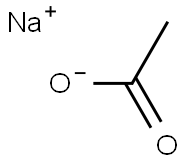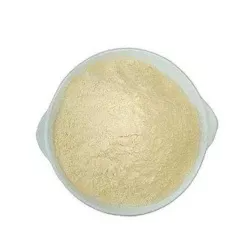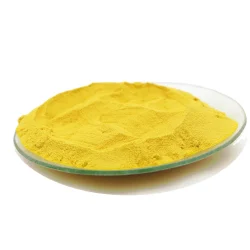Aluminum chloride
Synonym(s):Aluminum Chloride;Aluminium chloride;Aluminium trichloride;Aluminum trichloride;Aluminum(III) chloride
- CAS NO.:7446-70-0
- Empirical Formula: AlCl3
- Molecular Weight: 133.34
- MDL number: MFCD00003422
- EINECS: 231-208-1
- SAFETY DATA SHEET (SDS)
- Update Date: 2025-12-17 09:49:57

What is Aluminum chloride?
Absorption
It is reported that about 17-30 % of aluminum chloride formed from the reaction between orally ingested aluminum hydroxide and hydrochloric acid of the stomach is absorbed . In rabbits, administration of a single maximum safe oral dose aluminum chloride (333 mg Al/kg) resulted in aluminum absorption of 0.57 % . Aluminum chloride may be absorbed via dermal route, with the uptake increasing in the microgram range but with an upper limit .
Toxicity
Oral LD50 is 3470 mg/kg in rat and dermal LD50 is > 2 g/kg in rabbit . As aluminum accumulates in the brain, ataxia and seizures may be observed following ingestion of higher doses. Mental status changes, including obtundation, lethargy and confusion may be seen . Liver damage has been reported in acute and chronic toxicity of aluminum .
Description
Aluminum chloride (AlCl3) is used as a Lewis acid catalyst for a variety of reactions. The most well-known application of AlCl3 is in Friedel-Crafts reactions. Friedel-Crafts alkylations generally only require a catalytic amount of AlCl3, whereas Friedel-Crafts acylations require greater than one equivalent of AlCl3. This is because the Lewis acidity of AlCl3 results in strong complexes with carbonyl groups (the acylating agent).
Description
At first glance, aluminum chloride appears to be an inorganic salt with the empirical formula AlCl3; however, aluminum, like other group III elements, tends to form covalent bonds with halides. The energetically preferred coordination number of four causes AlCl3?to form the dimer Al2Cl6?shown, even in the vapor phase. AlCl3?is perhaps the quintessential Lewis acid; it reacts violently with water to form strongly acidic solutions. It has been used for decades in industry, most notably as a catalyst in Friedel–Crafts alkylation and acylation reactions, as well as in dozens of other processes. Its hexahydrate is the active ingredient in many antiperspirants.
Chemical properties
Aluminum chloride is a noncombustible but highly reactive whitish-gray, yellow, or green powder or liquid. Strong, acidic, irritating odor like hydrochloric acid.The vapor consists of double molecules Al2Cl6 . Soluble in water.
The Uses of Aluminum chloride
A yellowish-white crystalline or granular powder made by passing chlorine gas over alumina in a heated state and collecting the product by sublimation. Aluminum chloride was occasionally used in gold and platinum toning baths.
The Uses of Aluminum chloride

A solution of the SM (5.00 g, 12.59 mmol), SOCl2 (4.60 mL, 62.97 mmol), and DMF (1 drop) in DCM (20 mL) was stirred at reflux for 2 h. The mixture was concentrated to dryness to give the acid chloride. A mixture of AlCl3 (3.40 g, 25.18 mmol) in DCM (20 mL) was cooled to 5 C, then the acid chloride (prepared above) in DCM (10 mL) was added dropwise over 30 min. After addition, the solution was stirred at RT for 3 h. The mixture was quenched with ice H2O, neutralized with NaOH solution, and extracted with EtOAc (3 x 50 mL). The combined organics were dried (Na2SO4) and concentrated. The residue was purified by silica gel column chromatography (1:4 PE/EtOAc) to provide the product as a yellow solid. [1.86 g, 54%]
The Uses of Aluminum chloride
Astringent (topical).
The Uses of Aluminum chloride
Aluminum chloride is used as a catalyst in many organic reactions.
Indications
Indicated for the control of minor hemorrhage during dental restorative procedures. Indicated to reduce underarm perspiration. Reduce drug development failure ratesBuild, train, & validate machine-learning modelswith evidence-based and structured datasets.See how Build, train, & validate predictive machine-learning models with structured datasets.See how
What are the applications of Application
Aluminum chloride anhydrous is a widely employed aluminum preparation
Background
Aluminum chloride is a chemical compound with the chemical formula AlCl3. When contaminated with iron chloride, it often displays a yellow color compared to the white pure compound. It is used in various chemical applications as a Lewis base, with anhydrous aluminium trichloride being the most commonly used Lewis acid. It may also be found in over-the-counter as an antiperspirant or prescription products as an antihemorrhagic agent. In antiperspirant products, FDA approves the use of aluminum chloride as an active ingredient up to 15%, calculated on the hexahydrate form, in an aqueous solution nonaerosol dosage form .
Definition
aluminium chloride: A whitishsolid, AlCl3, which fumes in moist airand reacts violently with water (togive hydrogen chloride). It is knownas the anhydrous salt (hexagonal; r.d.2.44 (fused solid); m.p. 190°C (2.5atm.); sublimes at 178°C) or the hexahydrateAlCl3.6H2O (rhombic; r.d.2.398; loses water at 100°C), both ofwhich are deliquescent. Aluminiumchloride may be prepared by passinghydrogen chloride or chlorine overhot aluminium or (industrially) bypassing chlorine over heated aluminiumoxide and carbon. The chlorideion is polarized by the smallpositive aluminium ion and thebonding in the solid is intermediatebetween covalent and ionic. In theliquid and vapour phases dimer moleculesexist, Al2Cl6, in which thereare chlorine bridges making coordinatebonds to aluminium atoms (seeformula). The AlCl3 molecule can alsoform compounds with other moleculesthat donate pairs of electrons(e.g. amines or hydrogen sulphide);i.e. it acts as a Lewis acid. At hightemperatures the Al2Cl6 molecules inthe vapour dissociate to (planar)AlCl3 molecules. Aluminium chlorideis used commercially as a catalyst inthe cracking of oils. It is also a catalystin certain other organic reactions,especially the Friedel–Craftsreaction.
General Description
Aluminum chloride may be manufactured by chlorination of liquid aluminum in ceramic lined reaction vessels at 600-700oC.
Reactivity Profile
ALUMINUM CHLORIDE behaves as an acidic salt. Self-reactive. After long storage in closed containers, explosions often occur upon opening [Chem. Abst. 41:6723d 1947]. Can cause ethylene(also other alkenes) to polymerize violently [J. Inst. Pet. 33:254 1947]. Causes ethylene oxide to rearrange and polymerize, liberating heat [J. Soc. Chem. Ind. 68:179 1949]. Can catalyze violent polymerization of allyl chloride [Ventrone 1971]. Addition to nitrobenzene containing about 5% phenol caused a violent explosion [Chem. Eng. News 31:4915 1953]. Mixtures with nitromethane may explode when organic matter is present [Chem. Eng. News 26:2257 1948].
Hazard
Powerful irritant to tissue; moderately toxic by ingestion. Reacts violently with water, evolving hydrogen chloride gas.
Health Hazard
Contact with the skin or eyes in the presence of moisture causes thermal and acid burns.
Fire Hazard
Behavior in Fire: Reacts violently with water used in extinguishing adjacent fires
Flammability and Explosibility
Aluminum chloride is not flammable but reacts violently with water, so fires involving this substance should be extinguished with carbon dioxide or dry chemicals. Toxic fumes (HCl and reaction products) can be released during fires.
Industrial uses
Aluminum chloride (AlCl3) is a volatile solid which sublimes at 458 K. The vapour formed on sublimation consists of an equilibrium mixture of monomers (AlCl3) and dimers (Al2Cl6). It is used to prepare the powerful and versatile reducing agent lithium tetrahydridoaluminate (LiAlH4). Aluminium trichloride (AlCl3) act as Lewis acids to a wide range of electron-pair donors, and this has led to their widespread use as catalysts. In the important Friedel-Crafts acylation, AlCl3 is used as a strong Lewis acid catalyst in order to achieve the acylation of an aromatic ring.
Industrial uses
Aluminum chloride (AlCl3) act as Lewis acids to a wide range of electron-pair donors, and this has led to their widespread use as catalysts. In the important Friedel–Crafts acylation, AlCl3 is used as a strong Lewis acid catalyst in order to achieve the acylation of an aromatic ring.
Pharmacokinetics
Aluminum chloride is a hemostatic and antiperspirant agent.
Safety Profile
Moderately toxic by ingestion. Experimental teratogenic and reproductive effects. Mutation data reported. The dust is an irritant by ingestion, inhalation, and skin contact. Highly exothermic polymerization reactions with alkenes. Incompatible with nitrobenaenes or nitrobenzene + phenol. Highly exothermic reaction with water or steam produces toxic fumes of HCl. See also ALUMINUM COMPOUNDS, CHLORIDES, and HYDROCHLORIC ACID.
Potential Exposure
It is used as ethylbenzene catalyst, dyestuff intermediate, and detergent alkylate; in making other chemicals and dyes, astringents, deodorants, in the petroleum refining, and the rubber industries
Metabolism
In the small intestine, aluminum chloride is rapidly converted to insoluble poorly absorbed basic aluminum salts, consisting of a mixture of hydrated aluminum oxide, oxyaluminum hydroxide, various basic aluminum carbonates, and aluminum soaps .
Storage
work with this substance should be conducted in a fume hood, and impermeable gloves should be worn at all times when handling AlCl3. Aluminum chloride should be stored in sealed containers under an inert atmosphere in a cool, dry place. Care should be taken in opening containers of this compound because of the possibility of the buildup of HCl vapor from hydrolysis with traces of moisture.
Shipping
UN1726 Aluminum chloride, anhydrous, Hazard class: 8; Labels: 8-Corrosive material. UN2581 Aluminum chloride solution, Hazard class: 8; Labels: 8-Corrosive material
Purification Methods
Sublime it several times in an all-glass system under nitrogen at 30-50mm pressure. It has also been sublimed in a stream of dry HCl and has been subjected to a preliminary sublimation through a section of granular aluminium metal [for manipulative details see Jensen J Am Chem Soc 79 1226 1957]. It fumes in moist air.
Incompatibilities
A strong reducing agent. Contact with air or water forms hydrochloric acid and hydrogen chloride gas. Reaction with water may be violent. Water, alcohol, and alkenes can cause polymerization. Incompatible with nitrobenzene, organic material, and bases. Attacks metal in presence of moisture, forming flammable hydrogen gas.
Waste Disposal
May be sprayed with aqueous ammonia in the presence of ice and, when reaction is complete, flushed down drain with running water.
Properties of Aluminum chloride
| Melting point: | 194 °C |
| Boiling point: | 180°C |
| Density | 2.44 |
| vapor pressure | 1 mm Hg ( 100 °C) |
| Flash point: | 88 °C |
| storage temp. | Store below +30°C. |
| solubility | H2O: soluble |
| form | powder |
| appearance | Colorless to yellow solid |
| color | Yellow to gray |
| Specific Gravity | 2.44 |
| PH Range | 2.4 |
| PH | 2.4 (100g/l, H2O, 20℃) |
| Odor | Hydrogen chloride odor detectable when exposed to moist air |
| Water Solubility | reacts |
| Sensitive | Moisture Sensitive |
| Merck | 14,337 |
| Exposure limits | NIOSH: TWA 2 mg/m3 |
| Stability: | Stable, but reacts violently with water. Prolonged storage may lead to pressure build-up - vent container periodically. Incompatible with alcohols and a variety of other materials (see complete MSDS sheet for full list). |
| CAS DataBase Reference | 7446-70-0(CAS DataBase Reference) |
| NIST Chemistry Reference | Aluminum trichloride(7446-70-0) |
| EPA Substance Registry System | Aluminum chloride (7446-70-0) |
Safety information for Aluminum chloride
| Signal word | Danger |
| Pictogram(s) |
 Corrosion Corrosives GHS05 |
| GHS Hazard Statements |
H314:Skin corrosion/irritation |
| Precautionary Statement Codes |
P260:Do not breathe dust/fume/gas/mist/vapours/spray. P280:Wear protective gloves/protective clothing/eye protection/face protection. P363:Wash contaminated clothing before reuse. P303+P361+P353:IF ON SKIN (or hair): Remove/Take off Immediately all contaminated clothing. Rinse SKIN with water/shower. P305+P351+P338:IF IN EYES: Rinse cautiously with water for several minutes. Remove contact lenses, if present and easy to do. Continuerinsing. |
Computed Descriptors for Aluminum chloride
| InChIKey | VSCWAEJMTAWNJL-UHFFFAOYSA-K |
Aluminum chloride manufacturer
New Products
4,4-Difluoropiperidine hydrochloride tert-butyl 9-methoxy-3-azaspiro[5.5]undecane-3-carboxylate Indole Methyl Resin N-Isopropylurea N,N-Dicyclohexylcarbodiimide(DCC) MELDRUMS ACID 5-METHYLISOXAZOLE-4-CARBOXYLIC ACID Magnessium Bis glycinate Zinc ascorbate 1-bromo-2-butyne 2-acetamidophenol 9(10H)-anthracenone Erythrosin B, 4-Piperidinopiperidine 2-((4-morpholinophenylamino) (methylthio) methylene) malononitrile 2,4-dihydroxybenzaldehyde 3-(4-morpholinophenylamino)-5-amino-1H-pyrazole-4-carbonitrile Methyl 2-methylquinoline-6-carboxylate 2,6-dichloro-4-nitropyridine 4-Bromo-2-chlorobenzonitrile 2-(benzylamino)acetic acid hydrochloride 4-(tert-Butoxycarbonylamino)but- 2-ynoic acid 3,4-dihydro-2H-benzo[b][1,4]dioxepine 1-Phenyl-1-cycloprppanecarboxylicacidRelated products of tetrahydrofuran








You may like
-
 Aluminium Chloride 99%View Details
Aluminium Chloride 99%View Details -
 Aluminum chloride, ultra dry CAS 7446-70-0View Details
Aluminum chloride, ultra dry CAS 7446-70-0View Details
7446-70-0 -
 Aluminum chloride, ultra dry CAS 7446-70-0View Details
Aluminum chloride, ultra dry CAS 7446-70-0View Details
7446-70-0 -
 Aluminum chloride, ultra dry CAS 7446-70-0View Details
Aluminum chloride, ultra dry CAS 7446-70-0View Details
7446-70-0 -
 Aluminum chloride CAS 7446-70-0View Details
Aluminum chloride CAS 7446-70-0View Details
7446-70-0 -
 Aluminum chloride CAS 7446-70-0View Details
Aluminum chloride CAS 7446-70-0View Details
7446-70-0 -
 Aluminum Chloride CASView Details
Aluminum Chloride CASView Details -
 Aluminium Chloride Powder, Packaging Size: 25 Kg, Grade Standard: Medium BasicityView Details
Aluminium Chloride Powder, Packaging Size: 25 Kg, Grade Standard: Medium BasicityView Details
1327-41-9
